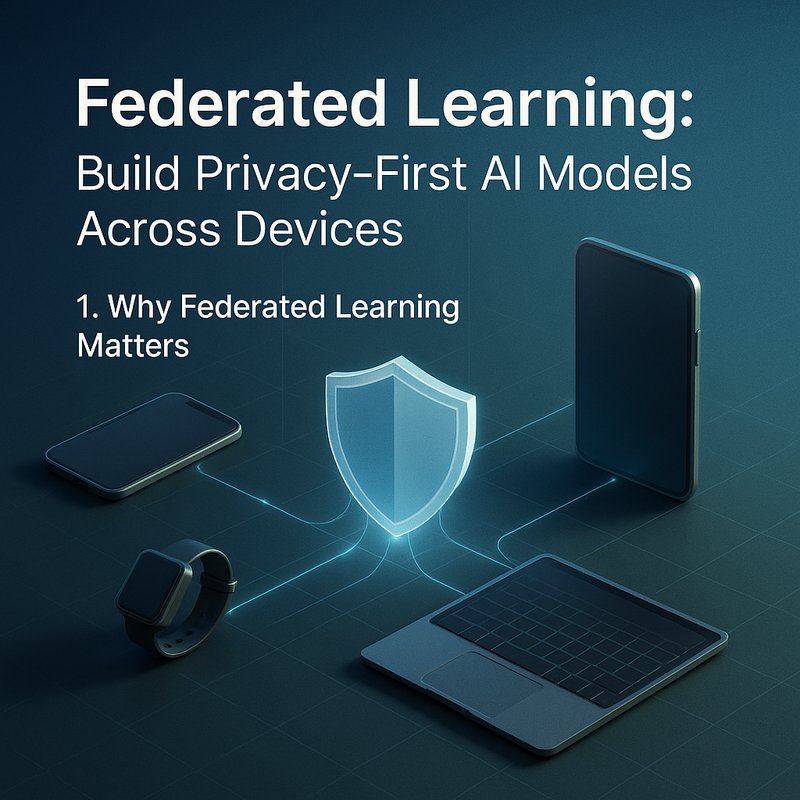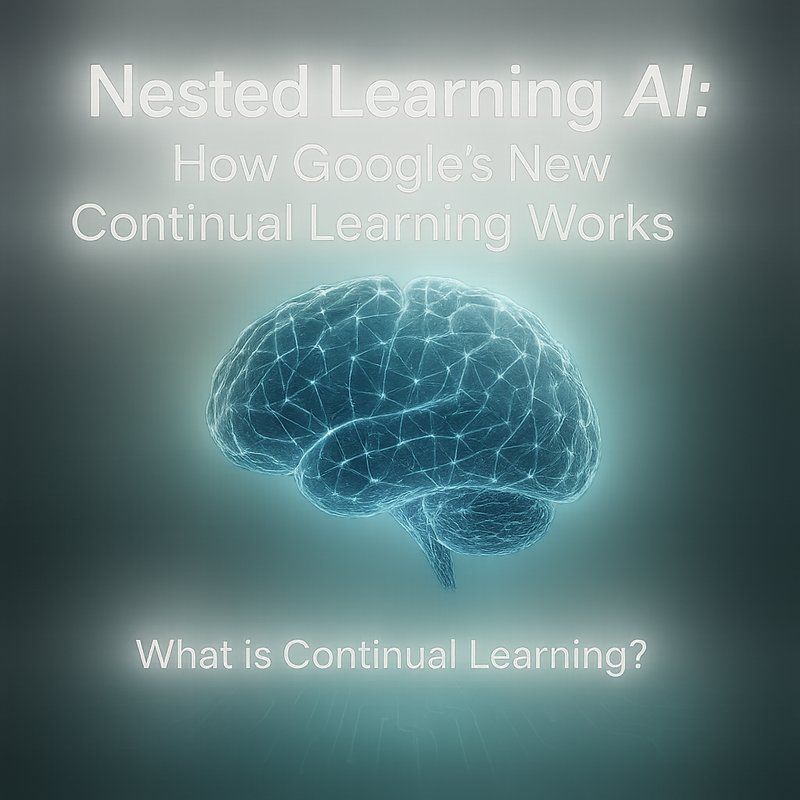Federated Learning is a way to train machine learning models on many devices or servers without moving the data to a central place.
It lets each device keep its own data, share only the model updates, and combine those updates into a single, stronger model.
This approach keeps personal or sensitive data on the device, reduces privacy risk, and can lower network traffic.
In this guide we will explain why Federated Learning matters, how it works, and how you can start building it today.
We will also look at real‑world examples and practical steps that fit into any organization, no matter the size.
1. Why Federated Learning Matters
Data privacy rules like GDPR and CCPA are tightening.
Companies that want to stay compliant need a system that can use data for AI while keeping it local.
Federated Learning is a solution that can help.
It speeds up model training, reduces data transfer, and keeps data on the device.
1.1 The Cost of Not Using Federated Learning
- Privacy fines: Violating privacy laws can cost millions.
- Customer trust: If customers feel their data is exposed, they may leave.
- Data transfer costs: Sending large datasets to a cloud can be expensive.
1.2 The Promise of Federated Learning
- Speed: Training can happen in parallel on many devices.
- Accuracy: The model learns from a diverse set of data.
- Privacy: Data never leaves the device.
2. Core Concepts of Federated Learning
Below is a high‑level view of the main parts you’ll need.
Each component can be built with open‑source tools or commercial services, and they all fit together through APIs.
2.1 The Federated Learning Workflow
- Model initialization – A central server sends a base model to all devices.
- Local training – Each device trains the model on its own data.
- Update aggregation – Devices send only the model updates back to the server.
- Model update – The server aggregates the updates and sends the new model back to devices.
- Repeat – Steps 2‑4 repeat until the model reaches the desired accuracy.
2.2 Key Components
| Component | Role | Example |
|---|---|---|
| Central Server | Orchestrates training, aggregates updates | TensorFlow Federated, PySyft |
| Client Devices | Train locally, send updates | Smartphones, edge servers |
| Secure Aggregation | Protects updates from tampering | Homomorphic encryption, differential privacy |
| Communication Protocol | Handles data transfer | gRPC, HTTP/2, MQTT |
2.3 Security and Privacy
Federated Learning can add extra layers of protection:
- Differential privacy – Adds noise to updates so individual data points cannot be identified.
- Secure multiparty computation – Allows aggregation without revealing individual updates.
- Encryption in transit – Uses TLS or other protocols to protect data while it moves.
3. Building Your First Federated Learning Pipeline
Below is a step‑by‑step recipe that you can follow in a week.
We’ll use Python, open‑source libraries, and a cloud provider’s storage services.
3.1 Set Up Your Environment
# Create a virtual environment
python -m venv fl-venv
source fl-venv/bin/activate
# Install dependencies
pip install tensorflow-federated tensorflow numpy
3.2 Create a Simple Model
import tensorflow as tf
import tensorflow_federated as tff
def create_keras_model():
model = tf.keras.Sequential([
tf.keras.layers.Dense(10, activation='relu', input_shape=(784,)),
tf.keras.layers.Dense(10, activation='softmax')
])
return model
3.3 Prepare Client Data

def load_client_data(client_id):
# Load local data for the client
# For demo, use MNIST subset
(x_train, y_train), _ = tf.keras.datasets.mnist.load_data()
x_train = x_train[client_id::10] / 255.0
y_train = y_train[client_id::10]
return tf.data.Dataset.from_tensor_slices((x_train, y_train)).batch(32)
3.4 Define Federated Computation
def model_fn():
keras_model = create_keras_model()
return tff.learning.from_keras_model(
keras_model,
input_spec=load_client_data(0).element_spec,
loss=tf.keras.losses.SparseCategoricalCrossentropy(),
metrics=[tf.keras.metrics.SparseCategoricalAccuracy()])
iterative_process = tff.learning.build_federated_averaging_process(model_fn)
state = iterative_process.initialize()
3.5 Run Federated Training
for round_num in range(1, 11):
client_data = [load_client_data(i) for i in range(5)]
state, metrics = iterative_process.next(state, client_data)
print(f'Round {round_num}, metrics={metrics}')
3.6 Add Privacy
# Add differential privacy to the updates
from tensorflow_privacy.privacy.analysis import compute_dp_sgd_privacy
# Example: set epsilon and delta
epsilon, delta = 1.0, 1e-5
3.7 Deploy to Edge Devices
- Package the model and training script into a Docker container.
- Use a lightweight runtime like TensorFlow Lite on smartphones.
- Schedule training during idle hours to save battery.
4. Real‑World Example: FineryMarkets
FineryMarkets, a fintech platform, needed to improve fraud detection without moving customer data to the cloud.
They followed a phased approach:
- Assessment – Identified all devices that hold transaction data.
- Pilot – Ran Federated Learning on 50 mobile apps for one month.
- Rollout – Expanded to 200 devices and added differential privacy.
- Monitoring – Built a dashboard that tracks model accuracy and privacy metrics.
Result:
- Accuracy rose from 85 % to 92 %.
- Data transfer dropped by 70 %.
- Customer trust improved, as no data left the device.
Read the full case study at https://blog.meetneura.ai/#case-studies.
5. Common Pitfalls and How to Avoid Them
| Pitfall | Fix |
|---|---|
| Over‑fitting on local data | Use regularization and mix data from many clients |
| Poor communication bandwidth | Compress updates and schedule training during low traffic |
| Weak privacy guarantees | Add differential privacy and secure aggregation |
| Inconsistent client participation | Implement fallback strategies for offline clients |
| Lack of monitoring | Build dashboards that show model performance and privacy metrics |
6. Future Directions
- Federated Reinforcement Learning – Train agents that learn from many devices.
- Cross‑Device Federated Learning – Combine data from phones, wearables, and IoT.
- Federated Transfer Learning – Share knowledge across different tasks.
- AI‑Assisted Federated Training – Use AI to optimize hyper‑parameters on the fly.
7. Getting Started
- Define your scope – Which devices will participate?
- Choose a framework – TensorFlow Federated, PySyft, or Flower.
- Set up a central server – Use a cloud VM or on‑premise server.
- Build a simple model – Start with a small neural network.
- Add privacy – Implement differential privacy or secure aggregation.
- Deploy – Package the training code for edge devices.
- Iterate – Monitor performance, adjust hyper‑parameters, and expand.
For more tools, visit https://meetneura.ai/products.
If you need help, check out the community forum or contact support.
8. Conclusion
Federated Learning is a practical way to build AI models that respect privacy and reduce data transfer costs.
By training locally on many devices and sharing only model updates, you can keep sensitive data on the device while still benefiting from a global model.
Start small, iterate fast, and watch your model accuracy climb while keeping privacy intact.









